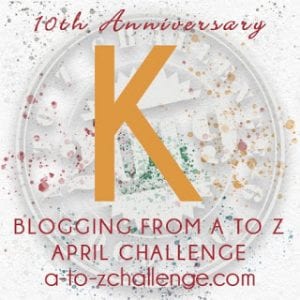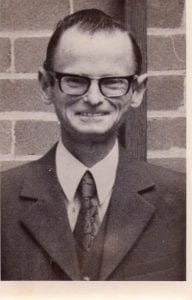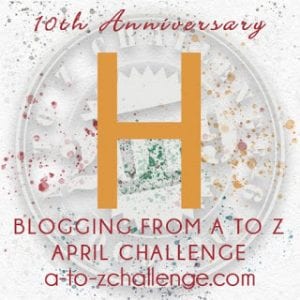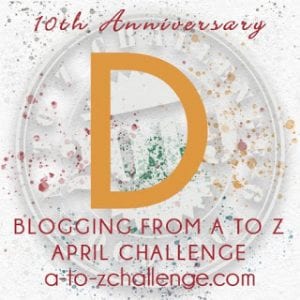 K is for King. No, I don’t have an ancestor or relative called King, but the latin for King is Rex and Rex will be the subject of my post today.
K is for King. No, I don’t have an ancestor or relative called King, but the latin for King is Rex and Rex will be the subject of my post today.
My grandfather was officially named Edward Rex Starr but everyone knew him by the name of Rex. Rex was born 8 April 1931 at the Royal Hospital for Women, Paddington NSW. When he was just eleven days old, his mother Doris died from childbed fever. I never had the chance to know Rex as he died nearly a decade before I was born but people who knew him well relate stories of a hard childhood.
Rex’s father remarried not long after his wife’s death in order to give Rex and his two elder brothers a mother figure, but apparently she wasn’t very mothering towards the three boys. I don’t know the truth of this, but the same source relate how Rex’s father was a very hard, military man who ruled his home with rigid discipline.
Now, I know it is true that Rex’s father was a military man who was involved with the Citizen Military Forces as early as the 1920s and also served in WWII. I also have had hints of his rigidness in a letter contained in a divorce packet. so perhaps this was why Rex’s stepmother didn’t feel very mothering towards him and his brothers.
Another family story is that around the age of eight (give or take a year or two) Rex was fostered out through Barnados Australia. According to the family member who told me this rumour, Rex himself told them this story but gave no reason as to why he was fostered out. This is something which I have yet to confirm, but will have to look into Barnados and what records they keep from previous decades and how accessible they are.

Rex (front left) on his wedding day in 1957
Whatever the case, by 1954 Rex was living with his father and stepmother number 2 in North Sydney. Although his father died in May 1956, Rex continued to live at the same residence with his stepmother until his marriage in January 1957. After his marriage, Rex and his wife lived in North Sydney before moving to Western Sydney in the early 1960s where they rented and eventually bought a 3 bedroom Department of Housing house in Mount Druitt.
During this time, Rex had a successful career as a shop salesman at a mens clothing store in Sydney. However, Rex’s health began to decline when he was still relatively young and he was forced to retire early from work when his health declined even further. On 30 September 1979, Rex died at the age of 48 years old from Diffuse Scleroderma. Scleroderma is an autoimmune disease which affects the connective tissue of the body. Over time, the skin hardens and circulation becomes increasingly poor leading to cold fingers and toes that turn red white or blue. In later stages of the disease, the internal organs are affected as the arteries harden.
Knowing what he was suffering from, it is little wonder that he was forced to retire from work as he would no doubt have been suffering from a great deal of pain. I have to wonder in the circumstances, it would have been somewhat of a relief to no longer be in constant pain.I think it would have been sad knowing that he was leaving a wife and four children behind, in a way I am glad that he eventually had a release from his pain.

Rex Starr holding his first born child in 1958

Rex later in life

 J is for James Bishop Bradshaw. James Bishop Bradshaw was the second husband of my third great grandmother and as such not directly related to me by blood. But has such an interesting background that I just can’t help but research him.
J is for James Bishop Bradshaw. James Bishop Bradshaw was the second husband of my third great grandmother and as such not directly related to me by blood. But has such an interesting background that I just can’t help but research him.

 I is for Isabella. Isabella Fairlie was the first wife of my second great grandfather Edward Biddle. Now, I know she isn’t a direct ancestor but I enjoy finding outmode about so called collateral ancestors who aren’t directly related to me. I first came across Isabella’s name on the death certificate of Edward Biddle and I became interested in her life and death, especially as the couple had children together who would have been an integral part of the lives of my Biddle family.
I is for Isabella. Isabella Fairlie was the first wife of my second great grandfather Edward Biddle. Now, I know she isn’t a direct ancestor but I enjoy finding outmode about so called collateral ancestors who aren’t directly related to me. I first came across Isabella’s name on the death certificate of Edward Biddle and I became interested in her life and death, especially as the couple had children together who would have been an integral part of the lives of my Biddle family. H is for Harriet. Rather than focus on one ancestor for this post, I am focusing on a name and the popularity of it. In my family tree, there are no less than 16 individuals who bear the name of Harriet or Harriett. So, I decided to do a bit of research about the name Harriet and its meaning.
H is for Harriet. Rather than focus on one ancestor for this post, I am focusing on a name and the popularity of it. In my family tree, there are no less than 16 individuals who bear the name of Harriet or Harriett. So, I decided to do a bit of research about the name Harriet and its meaning. G is for George. George Cole Milne was my 4th great grandfather and is one of the naughtiest ancestors I have come across.
G is for George. George Cole Milne was my 4th great grandfather and is one of the naughtiest ancestors I have come across.
 F is for Francis Rippingale. Francis Rippingale was my 4th great grandfather and for many years he represented one of my biggest brick walls, although I didn’t know his name at the time. In fact, this was one of the first times iI had seen what was blatantly false information on a certificate.
F is for Francis Rippingale. Francis Rippingale was my 4th great grandfather and for many years he represented one of my biggest brick walls, although I didn’t know his name at the time. In fact, this was one of the first times iI had seen what was blatantly false information on a certificate.
 E is for Edmund. Edmund Albert Hartley was my 2nd great uncle, the younger brother of my great grandmother. And his story his interesting to me because if it hadn’t been for world events at the time, his story could have ended so differently.
E is for Edmund. Edmund Albert Hartley was my 2nd great uncle, the younger brother of my great grandmother. And his story his interesting to me because if it hadn’t been for world events at the time, his story could have ended so differently.



 B is for Blanche. Blanche Harriet Trueman was my great, great grandmother on my father’s side of the family. She always intrigued me with a name such as Blanche. To me, it seems such a sophisticated name which makes me wonder where she got it from as her life seems to be far from sophisticated.
B is for Blanche. Blanche Harriet Trueman was my great, great grandmother on my father’s side of the family. She always intrigued me with a name such as Blanche. To me, it seems such a sophisticated name which makes me wonder where she got it from as her life seems to be far from sophisticated.